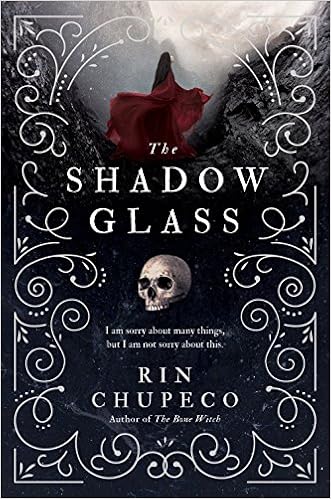A Review of Rin Chupeco’s The Shadowglass (Sourcebooks Fire, 2019).
By Stephen Hong Sohn
I was so excited to dig into the final installment of the Bone Witch trilogy. The adventures of Tea, Fox, Kalen, Kance, Likh, Zoya, and many others continue! I definitely didn’t want it to end, because I love these characters, and I loved the darkness associated with this series. In any case, let’s let B&N do some work for us: “In the Eight Kingdoms, none have greater strength or influence than the asha, who hold elemental magic. But only a bone witch has the power to raise the dead. Tea has used this dark magic to breathe life into those she has loved and lost...and those who would join her army against the deceitful royals. But Tea's quest to conjure a shadowglass, to achieve immortality for the one person she loves most in the world, threatens to consume her. Tea's heartsglass only grows darker with each new betrayal. Her work with the monstrous azi, her thirst for retribution, her desire to unmask the Faceless—they all feed the darkrot that is gradually consuming her heartsglass. She is haunted by blackouts and strange visions, and when she wakes with blood on her hands, Tea must answer to a power greater than the elder asha or even her conscience. Tea's life—and the fate of the kingdoms—hangs in the balance.”
The thing with this description is that it is sort of misleading. The description wants you to think that Tea is succumbing to a form of dark magic, but readers soon discover that a heartsglass that turns black can be evidence that someone has done something terrible to you. In other words, a blackening heartsglass can be a signifier of trauma rather than of evil. But the cost of wielding any magic in this world is a high one, so Tea’s quest to forge the shadowglass is one that is ultimately related to preserving the lives of those she loves. The problem with the quest for the shadowglass is that it would put an end to the life of her familiar, Fox, who has only retained a form of animation because of the magic that an asha can wield. In any case, much of the narrative momentum is created through the use of the bifurcated structure of two narrators. One appears in italics and is related to a bard that is documenting Tea’s quest, while the other is given to Tea herself.
The one problem I had with this final installment is that I found myself privileging one story over the other, and I became impatient to go back to Tea’s perspective! Chupeco is patient and clever, especially as she leads readers to wonder who it is that’s behind the Blight. You begin to realize halfway through that Tea’s been betrayed, but one of the reveals was definitely surprising and really knocked me off my readerly feet. The conclusion is naturally epic in its scope. It left me a little bit wistful and hoping that there could have been another outcome, but given how much darkness exists in this particular fictional world, it seemed a very fitting resolution. This series is one of my favorites that tends to be on the darker gothic side.
Buy the Book Here:
Review Author: Stephen Hong Sohn
Review Editor: Leslie J. Fernandez
If you have any questions or want us to consider your book for review, please don’t hesitate to contact us via email!
Prof. Stephen Hong Sohn at ssohnucr@gmail.com
Leslie J. Fernandez, PhD Student in English, at lfern010@ucr.edu